Where's Baton Rouge's Kidd? A look at the U.S.S. Kidd's history and renovation after its departure
HOUMA - For more than a year now, the USS Kidd sat in a drydock in Houma undergoing needed repairs and restorations.
It left Baton Rouge April 30, 2024 for Thoma-Sea Marine Constructors, where it arrived two days later.
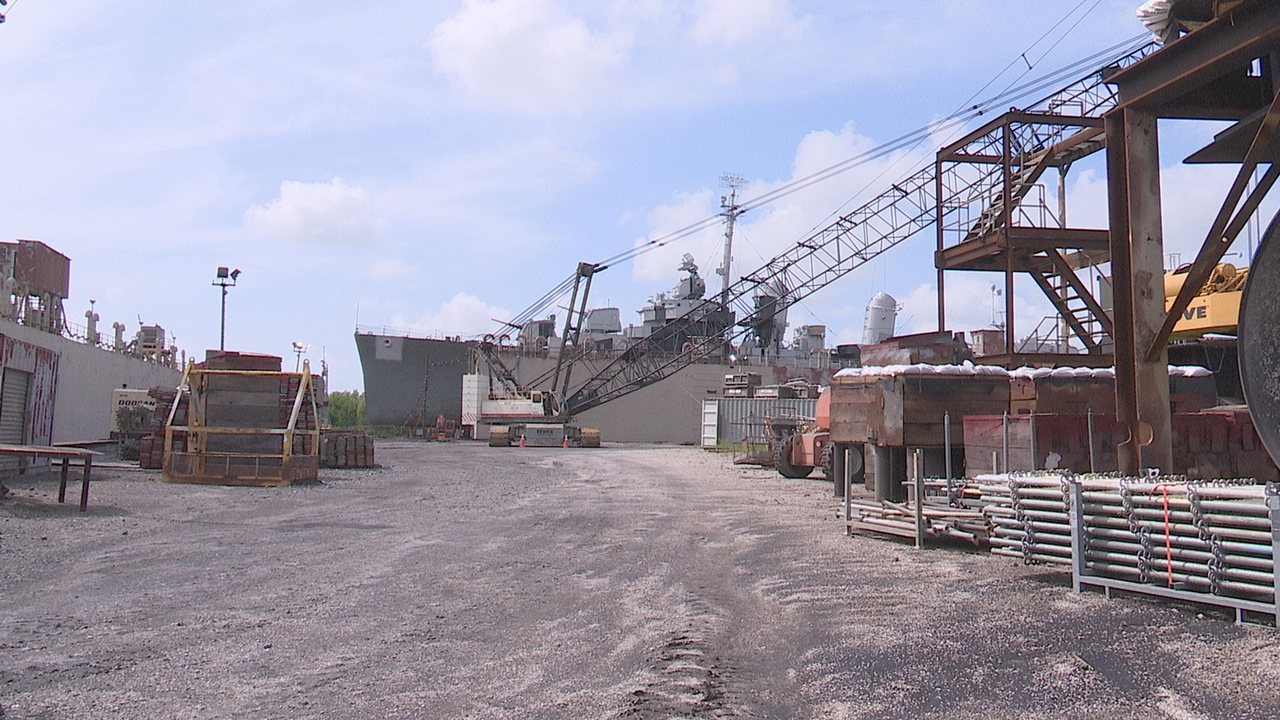
Ship Superintendent Tim NesSmith says the USS Kidd is a popular site in the capital city, drawing between 40,000 to 50,000 visitors each year.
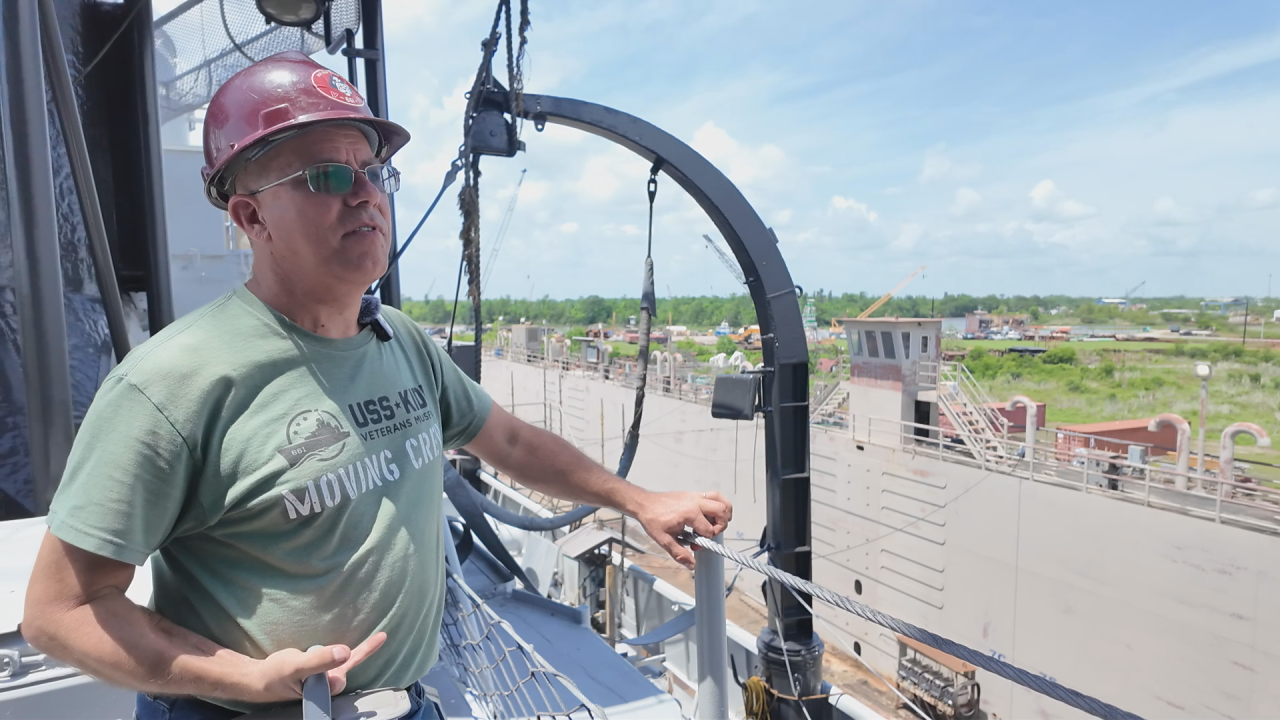
Getting funding for the needed work has always been a challenge.
"The legislature gave us just a little bit over $10 million with the priority being the hull. And they actually took a liking to the stewards berthing renovation," NesSmith said.
Trending News
The ship has had a long life, which meant it was overdue for some special care. It arrived in Baton Rouge May 23, 1982. Thousands of people lined the banks of the Mississippi to welcome her to town.
It had been 39 years since the U.S. Navy commissioned the ship into service in April 1943, at the height of World War II. The destroyer served in the Pacific in island-hopping campaigns and in the invasion of Okinawa, where a kamikaze attack hit the ship's boiler room, killing everyone inside.
The Kidd retreated, and later the Navy decommissioned her and placed her in the reserve fleet in 1946.
By 1951, the Kidd heard the call to serve again — this time during the Korean War. The Kidd also served a series of Western Pacific cruises from 1954 to 1959.
Decommissioned for the last time in June 1964, the Kidd was sent to sit in a Philadelphia shipyard as part of the reserve fleet until she was either called to serve again or sold for scrap.
NesSmith said the work of US Congressman Henson Moore; Harold Monning ,who served on the Kidd during World War II; the DESRON 48 Reunion Association, and many others made it possible to bring the Kidd to Louisiana to serve as a memorial.
It opened to the public in Baton Rouge in August 1983.
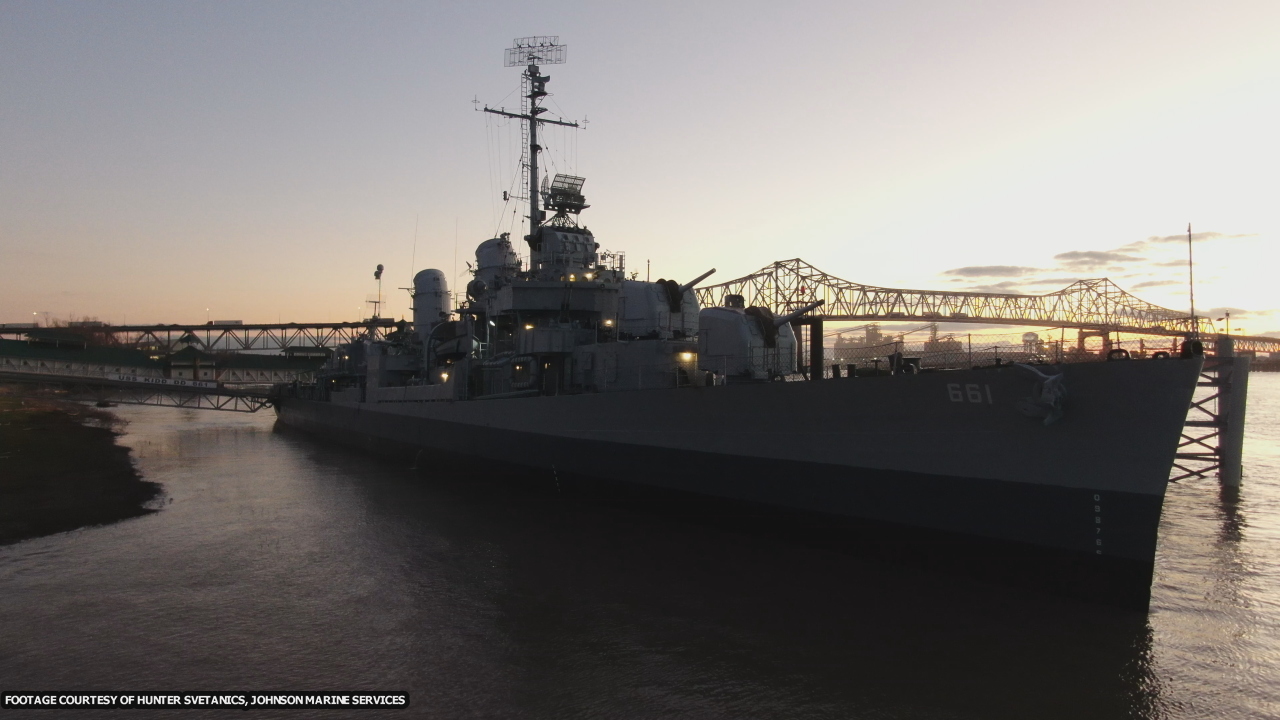
For more than 40 years, the destroyer has kept watch of the Mississippi, undergoing restoration to become one of the most accurately restored ships in the historic fleet.
NesSmith said the Kidd now faces a different type of battle. NesSmith said the Kidd has not seen drydock since her Navy days, more than 60 years ago, and restoration is overdue.
"Her secret is she got lucky. There are a lot of her sisters that ended up on the bottom. There's a lot of her sisters that ended up in scrap piles," NesSmith said.
NesSmith calls it a process of sailing back in time to get the destroyer to a 1945 configuration.
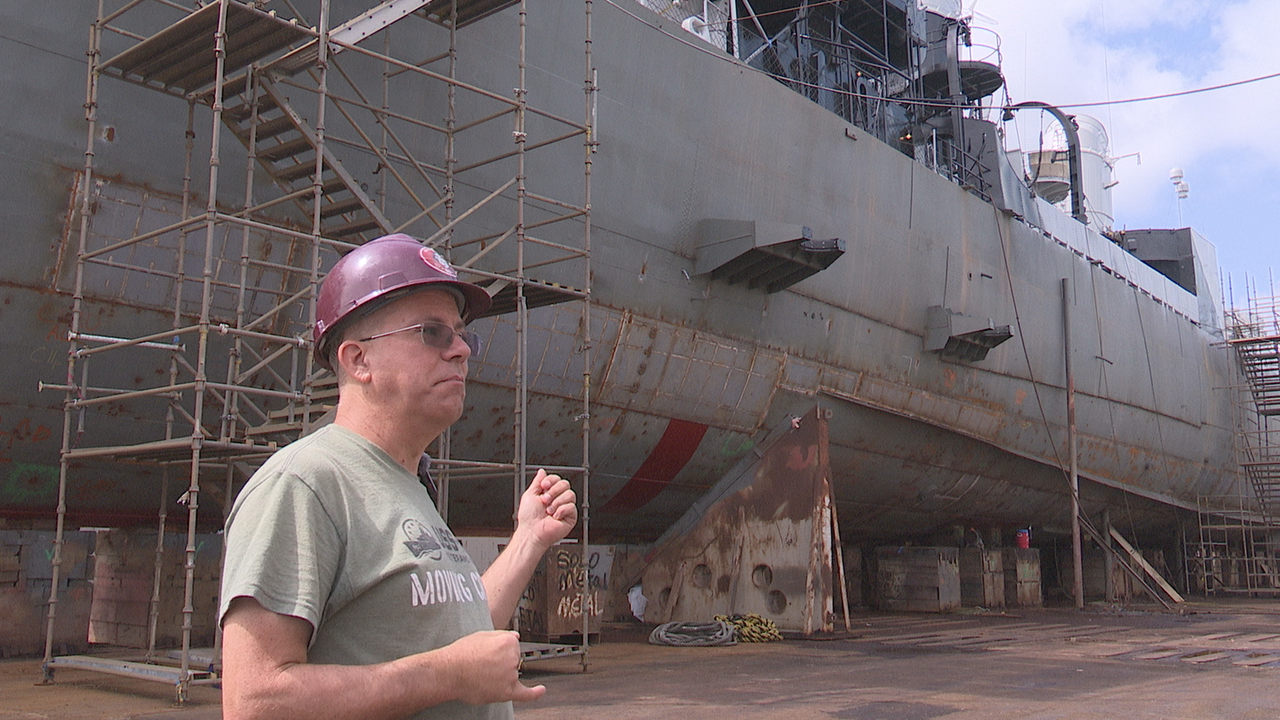
"We are the only ones that can go back to World War II because our structure wasn't modified. Their structures were all modified. They can't walk back to World War II," NesSmith said.
Typically, the Kidd spends half the year in the Mississippi River. The other half of the year, the ship sits in a special cradle to keep her out of the water. NesSmith said bringing the ship to Houma allows crews to work on parts of the ship they wouldn't have been able to repair otherwise.
Over the past year in Houma, crews worked to restore the ship, taking out additions made later to the ship.
One room - originally they the steward's berthing room - was modified during the Korean War to hold fire-control and computer systems. Before that, it was used to keep the crew separated by race from 1943 to 1946.

"This was where you would have 12 bunks, 3 groups, four high in this room," NesSmith said. "This is where the African American and Black crew lived because everything was segregated. And I say African American and Black because people from outside the country could sign up to serve in the US military and earn citizenship that way."
The military was integrated in 1948.
"It came back in 51. They didn't need the segregated space. They needed room for fire control. So that's why they took it," NesSmith said.
NesSmith searched for blueprints and details to understand the room's original configuration, even visiting the Kidd's sister ships, the USS Cassin Young in Boston, and the USS The Sullivans in Buffalo, NY.
"They let me crawl through there and I was able to get great pictures of what it looked like down here. And when I showed the pictures with the blueprints to the shipyard, they're like, 'These are great because now you know, now we can visualize what the blueprints are showing us.'"
The Kidd's rudder was also taken back in time. Divers had to cut off part of the rudder to get the ship out of its spot on the Mississippi so it could go to Houma.
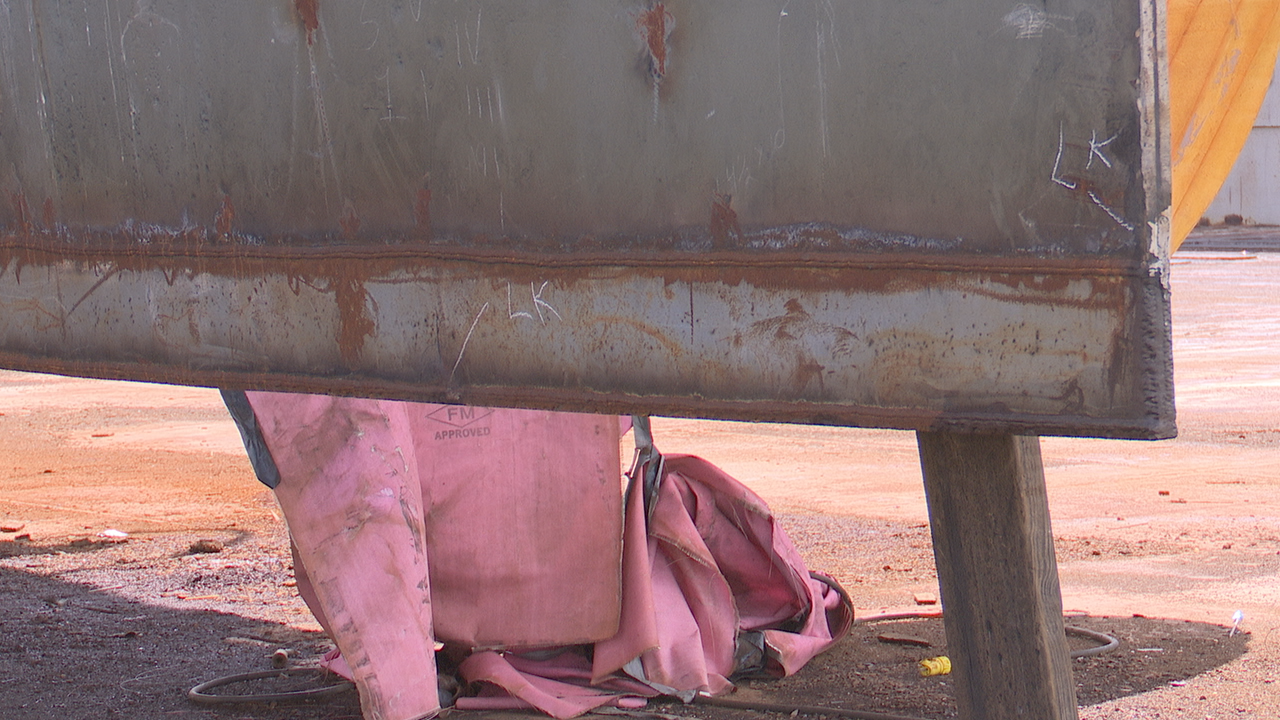
"When we started looking at it, we're like, well this is a Cold War rudder. We actually do get out of the water where people can see the rudder. What if we just went ahead and adapted the rudder instead of reattaching it? We just go ahead and shave and clean off, make it the proper length, and change the front. And then we've got her pushed a little bit closer back to 1945, which is our target. And this is the result," NesSmith said.
Some parts that will not be restored in Houma, like the 40-millimeter guns, were sent off to those who can make the repairs. In this case, a workshop in Houston that restored the guns on the USS Texas. NesSmith said the Houma crews are making the new foundations for the guns.
"I finally found a minesweeper, the USS Hazard up in Omaha, Nebraska. And they still had their gun tubs. They still had their gun and they still had the foundation ring and the blueprint. So they sent us the blueprints and Thoma-Sea fabricated the rings off of all those blueprints," NesSmith said.
Other work includes fixing divots in the hull of the ship.
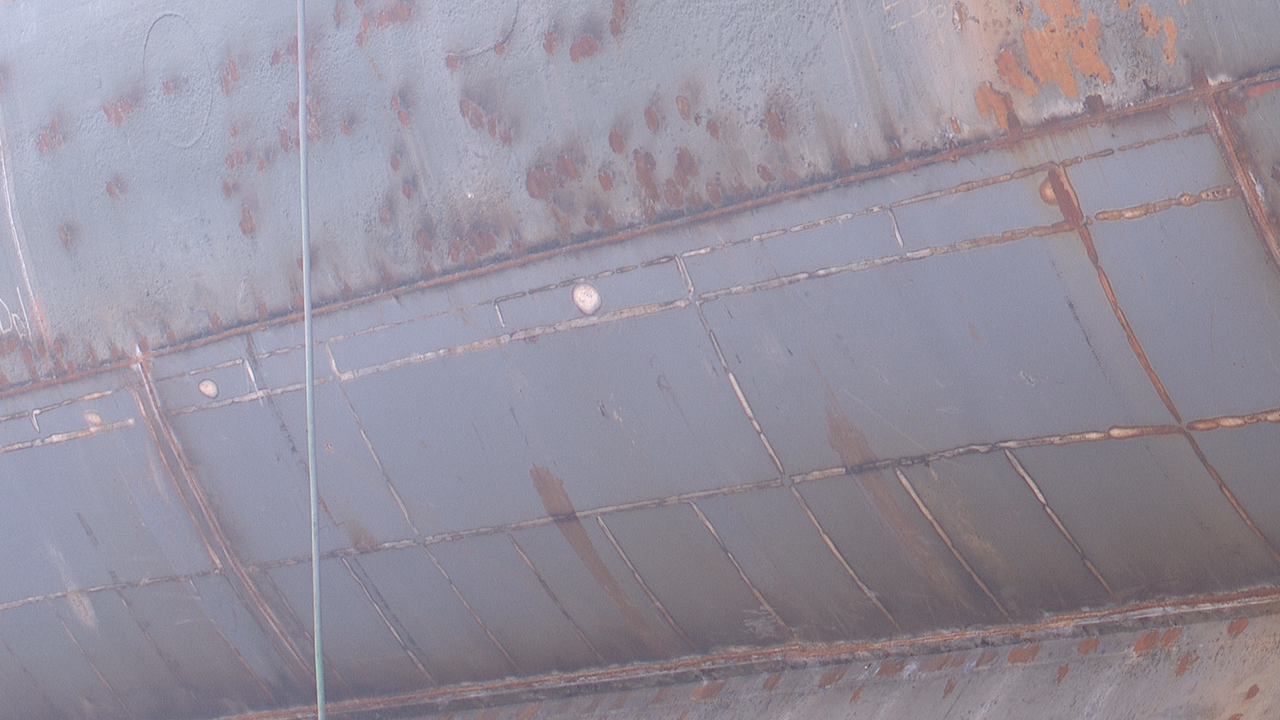
"So, what they've done, they have gone through and ultrasound tested the whole hull from the water line all the way down and determined the thickness. And we have the blueprints from the original build to show what the original thicknesses were," NesSmith said.
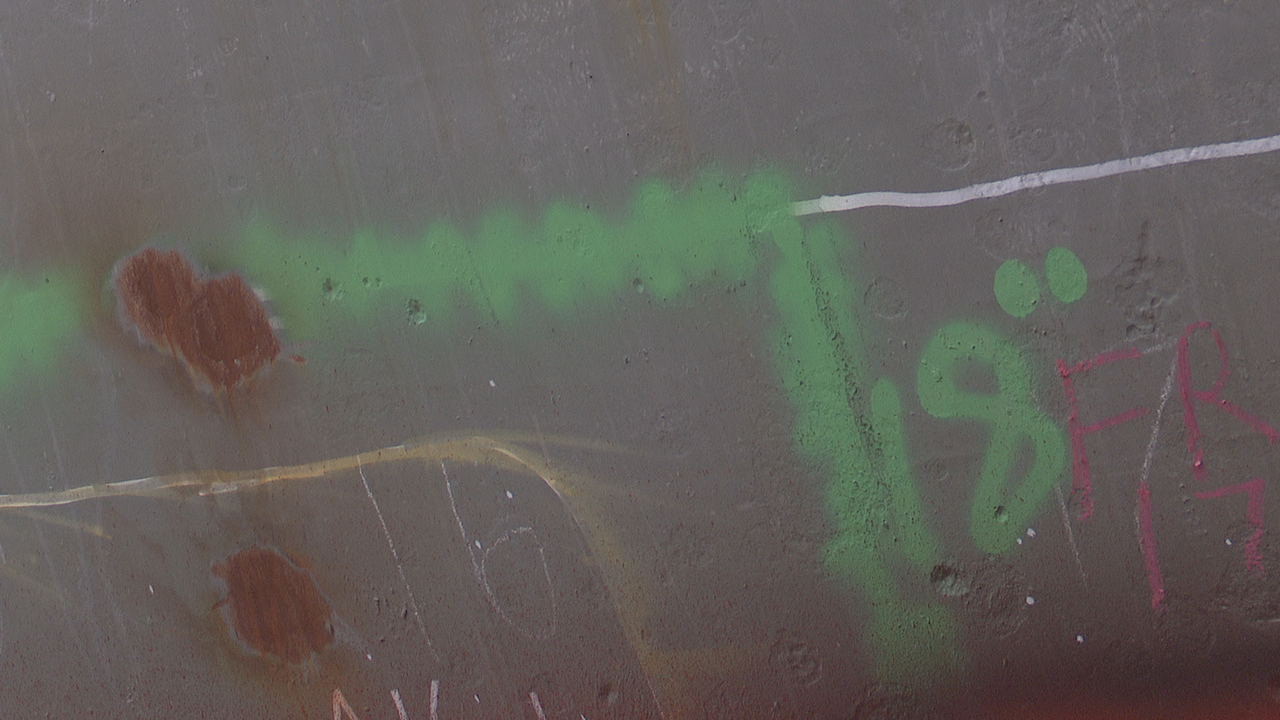
One big difference, NesSmith said, is the ship's paint job.
For all her years in Baton Rouge, the USS Kidd sported Measure 22, wartime camouflage paint, designed to make the ship blend into the horizon.
"She doesn't blend in with the Mississippi, but she would've blended in with the Pacific and the Atlantic," NesSmith said.
After restorations, the ship will have dazzle camouflage, which uses bold patterns to throw off the enemy's perception of the ship's location.
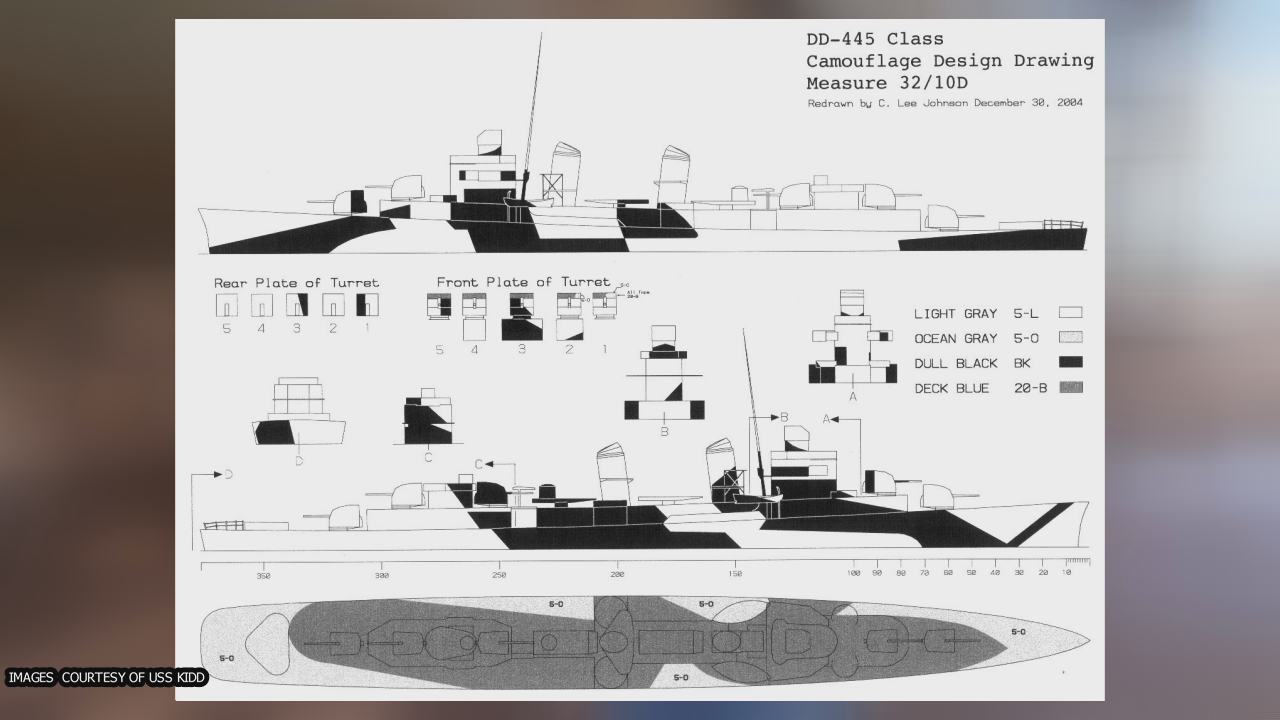
"It confuses gunnery and torpedo men. So, you can't tell because of the zigs and zags, is the ship going this way or is it going that way? Is it going toward us or away from us?" NesSmith said.
But the old razzle dazzle is not permanent, NesSmith said. It is a departure from the ship's 1945 configuration, which he called a compromise. It will need repainting every five years.
"Five years after that, when we had to repaint, we're gonna go back to our 1943 camouflage, which is all dark blue Measure 21. And then after that, we go back to the Measure 22," he said.
Capt. Kidd, the ship's mascot, still needs to be added, showcasing the ship's moniker "Pirate of the Pacific."
For NesSmith, every project completed means the ship is just a little closer to its target date.
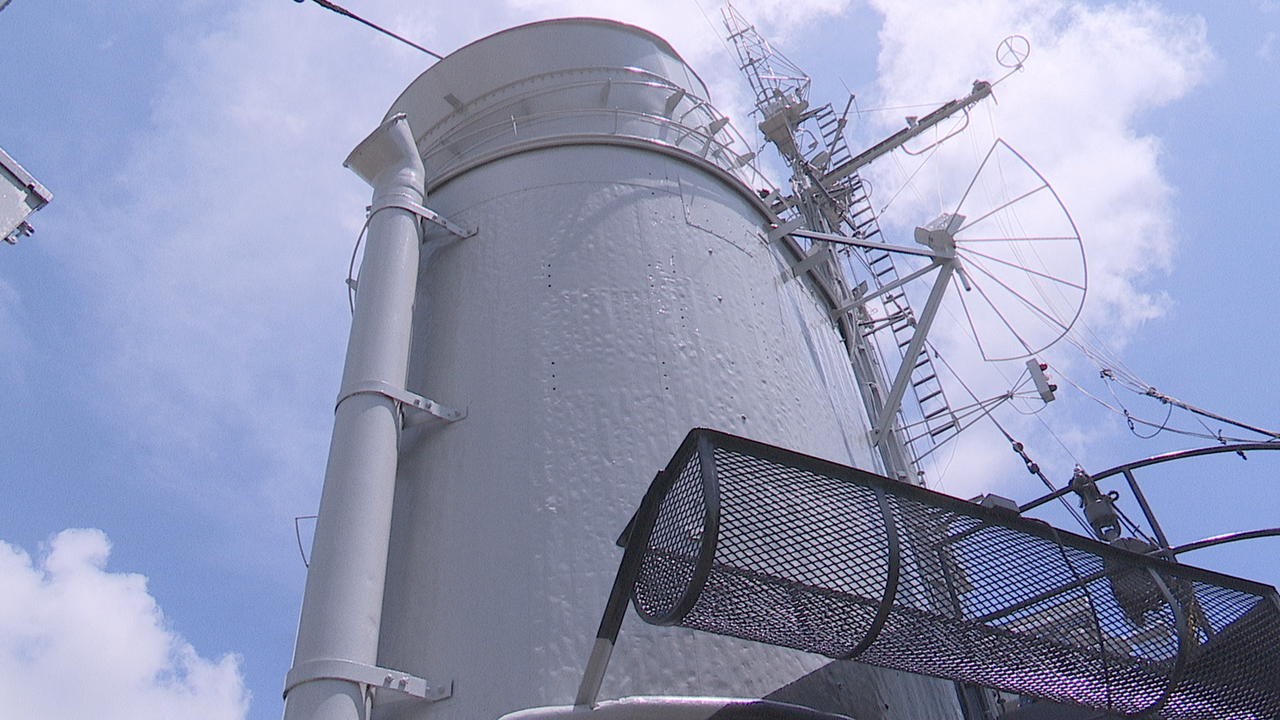
NesSmith said that if fundraising efforts succeed, crews will continue to make repairs until November. With consideration of the river levels, NesSmith said the Kidd will come home to Baton Rouge next spring.
"Basically, we're just trying not to kick the can down the road to the next generation," he said. "While we've got the door open and we're able to do it, we're gonna try to raise the money and try to do it."


